Magic: The Gathering – Duels of the Planeswalkers 2013 – Review
by Chris
|
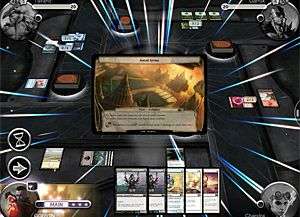 On the plane of Kolbahan, in the Astral Arena, an eternal war raged between two mighty foes. Garruk Wildspeaker, the warrior Planeswalker, duels with the necromancer and fellow Planeswalker, Liliana Vess. Despite having a legion of reanimated dead at her command, Liliana is unable to destroy the weakened Garruk, as she is constrained to the rules of the plane that they currently walk on; only one creature may attack and only one can defend. Garruk, equally bound by these rules, is running out of time. His life is being sapped by Liliana’s Underworld Dreams enchantment and he cannot win as the situation currently stands. He will be dead long before he as the power to strike back.
On the plane of Kolbahan, in the Astral Arena, an eternal war raged between two mighty foes. Garruk Wildspeaker, the warrior Planeswalker, duels with the necromancer and fellow Planeswalker, Liliana Vess. Despite having a legion of reanimated dead at her command, Liliana is unable to destroy the weakened Garruk, as she is constrained to the rules of the plane that they currently walk on; only one creature may attack and only one can defend. Garruk, equally bound by these rules, is running out of time. His life is being sapped by Liliana’s Underworld Dreams enchantment and he cannot win as the situation currently stands. He will be dead long before he as the power to strike back.
Magic: The Gathering – Duels of the Planeswalkers 2013 is the latest edition in a long running franchise that I’ve longed to get to grips with. Luckily, last year I had that opportunity with the 2012 edition. I racked up a disturbingly large amount of time playing with all the decks I could get my hands on, enjoying the thrill of near death escapes and crushing victories. For newcomers, Magic: The Gathering is a collectible card game, first introduced in 1993, that is still going strong today, with over twelve million players. Combining a mix of luck and skill, two or more players duel in a turn based environment, with the goal being annihilation of your opponent’s life points. In 2009 a videogame was created to take the game to the virtual world. Magic: The Gathering – Duels of the Planeswalkers proved to be an instant success, and the 2013 edition looks to build further on that success. Being a huge fan of the 2012 edition, I could only hope that I would enjoy the 2013 edition as much as its predecessor.
Magic 2013 (yes I’m using the shorthand, I’m not typing the full name out every bloody time) immediately impresses at the menu screen. I’m a sucker for a good menu and Magic 2013 has a crisp look and is easily navigated. Sure, it looks similar to the last game but it’s the subtle differences that make it look much improved. When I click on the deck manager I don’t just get a list of decks with some numbers below them, I get a separate screen that gives me information, artwork and statistics. When I click on the campaign mode I don’t just get some small pictures representing each character to fight, but a more beautiful moving backdrop that is scanning an area to duel in. The developers, Stainless Games, have certainly made the game look better – even if it is just a menu, it’s still a part of the game.
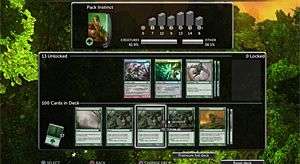 A large piece of the magic universe is the storyline, and while I’d like to be able to say that I know and understand the whole universe, I’d be a filthy liar. Having only got into Magic last year, I’ve not looked further afield than playing Magic 2012. The plot here, if you can call it that, is really just a series of battles before facing the dragon Planeswalker, Nicol Bolas. The lack of a plot doesn’t detract from anything really, this is a card game after all, but there is just enough information and variation to keep you interested.
A large piece of the magic universe is the storyline, and while I’d like to be able to say that I know and understand the whole universe, I’d be a filthy liar. Having only got into Magic last year, I’ve not looked further afield than playing Magic 2012. The plot here, if you can call it that, is really just a series of battles before facing the dragon Planeswalker, Nicol Bolas. The lack of a plot doesn’t detract from anything really, this is a card game after all, but there is just enough information and variation to keep you interested.
While the aforementioned menu can look as appealing as a steak to a starving man, it won’t mean anything if the game itself isn’t any good. An integral part of the game is the decks you get to wield as a Planeswalker, and there are ten on offer with Magic 2013, with the starters being the Born of Flame and Pack Instincts decks. I personally think that the variety in decks is spot on in this edition and without giving too much away I’ll give a brief insight into each of them, in no particular order. Starting with one of my favourites, the Pack Instincts deck is designed for overwhelming power and brutality. It’s a green deck, featuring a host of wild creatures and spells that mainly focus on buffing up your existing cards and overpowering the enemy. It’s an excellent starter deck but can be easily undone by any deck that has flying creatures or a high ratio of spells or enchantments, as Pack Instincts lacks the ‘magical’ aspect.
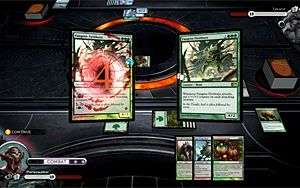 The second starter deck is Born of Flame which, as the name suggests, is a red based deck that focuses on more aggressive creatures, but they generally have a weaker defence than those of Pack Instincts. Furthermore, there is a large amount of spells that focus on burning creatures and players alike. This deck is easily one of the most annoying to combat, as it can be impossible to put up a decent defence against a deck that constantly destroys your creatures with spell cards. Thankfully, the wielder of such decks generally have to act quickly, as prolonged combat is not in their favour, with very little or no life giving spells or enchantments.
The second starter deck is Born of Flame which, as the name suggests, is a red based deck that focuses on more aggressive creatures, but they generally have a weaker defence than those of Pack Instincts. Furthermore, there is a large amount of spells that focus on burning creatures and players alike. This deck is easily one of the most annoying to combat, as it can be impossible to put up a decent defence against a deck that constantly destroys your creatures with spell cards. Thankfully, the wielder of such decks generally have to act quickly, as prolonged combat is not in their favour, with very little or no life giving spells or enchantments.
Crosswinds is one of the stranger decks to be included in Magic 2013. I struggled to beat it first time round, but while I was unable to cause the Planeswalker any damage, I wasn’t losing life either. This blue deck is highly defensive, focusing on soaking up pressure and slowly chipping away the opposition’s health points with an array of flying and water based creatures. There are counter-spells included, which help disrupt enemy plans and buy you more time to find the offensive cards required to win.
One of my favourite decks is Celestial Light, which came fully unlocked if you pre-ordered the game. It iss associated with Ajani Goldmane (possibly the coolest name since Max Payne), a fearsome Planeswalker who believes in the purity of body and soul, which would explain the huge amount of life giving cards. Some would argue that the deck is wildly unbalanced; most of the cards have life giving properties and it is very easy to double your health in the first five turns, but the key to tackling this white deck is disruption and evasion, which brings us onto the next…
If draining all of your enemy’s life points isn’t your preferred route to victory, then the only other option is to drain their deck of cards. If a player cannot draw a card then they lose the game. Enter Jace Beleren, human Planeswalker and user of the Dream Puppets deck. If ever a deck was going to concentrate on pissing off other people, it’s this one. The focus is on getting as many cards out of the library (your deck of cards) and into the graveyard (where ‘used’ cards go) as possible. Players can play three cards and see their opponent lose twenty. What Dream Puppets lacks in creatures and power it makes up for in utter chaos.
Chaos can be equally associated with Liliana Vess and her black deck, Obedient Dead, which is very similar to the 2012 edition. It has a large amount of variety about it in terms of spells, enchantments and creatures. Focusing on the recently dead, fully dead, or soon-to-be dead creatures, this deck is probably the most balanced in terms of power and flexibility. Its only downfall is the speed, as the really heavy hitting creatures are pretty expensive in mana costs.
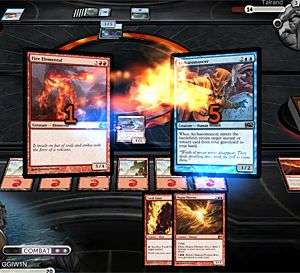 At the opposite end of the scale is Goblin Gangland – a red deck which sacrifices power for ridiculous numbers. Goblins have a habit of not only being numerous, but dangerous in larger numbers. This deck exploits that fact with cheap but effective siege creatures; what they lack in strength they make up for in a quick and small attacks. There isn’t much flexibility with this deck, sadly, and if you don’t like goblins then you’re shit out of luck, but they are certainly not to be underestimated.
At the opposite end of the scale is Goblin Gangland – a red deck which sacrifices power for ridiculous numbers. Goblins have a habit of not only being numerous, but dangerous in larger numbers. This deck exploits that fact with cheap but effective siege creatures; what they lack in strength they make up for in a quick and small attacks. There isn’t much flexibility with this deck, sadly, and if you don’t like goblins then you’re shit out of luck, but they are certainly not to be underestimated.
Equally powerful and suspiciously underrated is the Ancient Wilds deck, which features powerful creatures and some ridiculously effective enchantments. This green deck can disrupt as much as it can punish, its only flaw being that it can be slow to get going. Think Pack Instinct but with smaller creatures and better enchantments and spells.
The penultimate deck is Exalted Darkness, featuring one of the most interesting mechanics to appear in the Magic 2013 edition. ‘Exalted’ simply means that if a creature attacks alone it gains +1 power and +1 defence for each card you have that is ‘exalted’. It’s a clever mechanic, which means that as a group attacking entity they’re incredibly weak, but as a solo card they can be unstoppable. They certainly aren’t for newcomers, as they require a certain amount of finesse to wield, but they’re plenty of fun to play with. Deck speed and this unique mechanic means that attacks can be devastating, provided you can keep those exalted cards in play.
The final deck to showcase is the one I’ve been using most: the Peacekeepers deck. It is essentially the white human deck, with some mystical creatures thrown in for good measure. Much like the goblins they rely on numbers rather than brute strength but, unlike the goblins, they aren’t too shabby by themselves and it can be incredibly easy to get a small army out on very little mana. This is another good starter deck that has some very powerful disruption cards, but will ultimately lack the killing blow if you don’t have the numbers to buff up some of the units that rely on the cards around them.
As you can see, you’re spoilt for choice with this array of decks. Each feels and plays very differently, which is a relief after the joy of using the 2012 decks. Each deck has thirty cards to unlock, which is done through the campaign, revenge mode, challenges and Planechase mode, and as you only unlock one at a time, it means that getting to use some of those more powerful cards will require many hours to be sunk into the game.
The campaign, much like the plot, is very straightforward: you move from battle to battle, with the occasional ‘encounter’ to face. These are a worthy distraction but never stop you going to the main battle if you just want to unlock decks. I have the difficulty set to medium and that occasionally throws me a curve ball to deal with, but it’s generally a fairly relaxed affair. Turning the difficulty up to the hardest setting results in the AI taking the metaphorical sledgehammer to a peanut, but it can be nice to ramp up the challenge if you’re swatting off the AI too easily. For beginners I would recommend the medium difficulty as the starting tutorial is incredibly helpful and will guide you for as long as you need it to. The ‘more info’ button on each card will always be on hand, should you need further explanation.
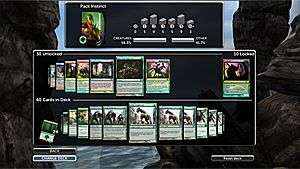 Revenge mode is unlocked after finishing the campaign; there isn’t much to say about it, other than it ramps up the difficulty, regardless of the actual difficulty you’ve got it set on. You replay the same characters again from the campaign, but they have the decks fully unlocked and know how to wield them. There are some extremely difficult challenges to be met here, especially when trying to face the Ancient Wilds deck, which saw me take to the GamingLives forums to vent my frustration after getting my arse handed to me several times over.
Revenge mode is unlocked after finishing the campaign; there isn’t much to say about it, other than it ramps up the difficulty, regardless of the actual difficulty you’ve got it set on. You replay the same characters again from the campaign, but they have the decks fully unlocked and know how to wield them. There are some extremely difficult challenges to be met here, especially when trying to face the Ancient Wilds deck, which saw me take to the GamingLives forums to vent my frustration after getting my arse handed to me several times over.
When you’re done with the campaign, there is a totally separate challenge mode. Unlike the campaign challenges, which generally allow you to tackle an opponent with whatever deck you like, these separate ones give you a pre-set situation to figure out. It’s like a game of chess with all the pieces already in place – you’ve just got make the final moves to avoid death and seize victory. While looking – and probably sounding – perfectly straightforward these are difficult challenges and require an understanding of every card on the field of play and in your hand. You only have one turn to win the game, so you can’t bluff your way through and hope for the best. It is, quite literally, victory or death.
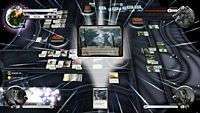 |
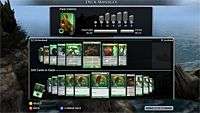 |
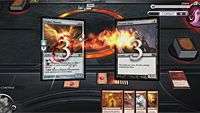 |
After you’re done with those, or perhaps, to be more exact, when they’re done with you, you can take the fight to Planechase mode. This replaces the Archenemy mode from last year, which I’m a little disappointed about as it was my favourite part of Magic 2012. Nevertheless, familiarity is the seasoning of death or something similar and I therefore greeted Planechase mode with open arms, whereby it promptly kicked me in the balls and made me its bitch. This game type is an enigma, wrapped in a riddle, thrown into a bowl of chaos, lightly sprinkled with anarchy and then served on a plate of lawlessness. I’m not insulting it – far from it – it’s bloody excellent, but by god is it tough. I’ll do my best to explain it without making your brain drip from your ears: essentially taking place between two or more people, it plays out like a normal game of Magic, with the exception being that you duel on different ‘planes’. These ‘planes’ are dictated by a pile of cards in the centre that effect the battle in various ways. Each card has a passive ability and a ‘chaos’ one.
 The passive abilities are fairly straightforward and can have very direct effects on the battle. They can make changes to attack moves, for example allowing only one creature to attack and only one to block, which puts massive armies of creatures in the ‘useless’ section. Someone using Pack Instinct would be crying out in rage at this stage, but someone using the Exalted Darkness deck would be very happy indeed. They can also force you to make a tactical choice, as one plane states that if you cast a spell you can’t attack, but if you attack you can’t cast spells.
The passive abilities are fairly straightforward and can have very direct effects on the battle. They can make changes to attack moves, for example allowing only one creature to attack and only one to block, which puts massive armies of creatures in the ‘useless’ section. Someone using Pack Instinct would be crying out in rage at this stage, but someone using the Exalted Darkness deck would be very happy indeed. They can also force you to make a tactical choice, as one plane states that if you cast a spell you can’t attack, but if you attack you can’t cast spells.
So, in order to change the plane and rid yourself of this burden you roll a die. There are three possible outcomes to this. Firstly, you can hit a blank side and get nothing. You can hit the icon to simulate a change of plane, cross your fingers and hope for the best. Finally, if you’re lucky (and I say lucky knowing it could be about as lucky getting your testicles caught in a vice), you’ll get the chaos icon. The chaos element usually does something, yes, you’ve guessed it, chaotic to the game. The following is a marvelous example of just how excellent this game type is.
One plane features an apocalyptic event set to occur and wipe out all the creatures in play, regardless of their powers, abilities and strengths. It will literally destroy every creature on the battlefield the moment the plane changes from the current one. Immediately you’d be thinking, “well we won’t change plane then, avoiding the apocalyptic event that will wipe out all life as we know it”. The trick, however, is that the chaos element to this plane allows you to select one creature to survive the attack, per successful roll. In theory if you had five creatures, five successful rolls would allow all of them to be spared. The question is, at what point do you chance rolling the dice and potentially change the plane, the catalyst for the death scenario? What are your opponents thinking? Do you skip rolling altogether and just try and fight it out? Are your creatures so powerful that other players might sacrifice theirs to kill yours? After your first roll, considering that each subsequent one will cost you land, at what stage do you stop rolling and focus on the cards in your hand. This is just one example of the beauty and unpredictability of Planechase.
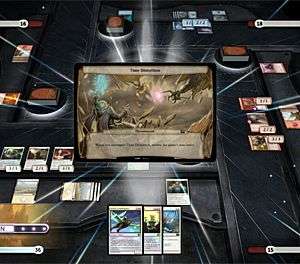 Each game is a lesson in tenacity and thinking on the fly, trying to have a strategy sorted for any eventuality. In a four versus four situation, where the field of play keeps changing, it can be very difficult to predict just what exactly you can do to gain the upper hand. It’s tricky enough concentrating on the planes, without considering just what the opposition is up to. Luckily they are in the same situation, so it makes for some incredibly tense gameplay. Those games can last for some time and there are other options in multiplayer, including up to four player multiplayer and some two versus two action. Despite the awesome of Planechase, I’m disappointed that Archenemy mode didn’t make a return for the latest edition. It was a worthy addition to the game and is very much missed. I can’t imagine it would have taken much to include it and I would have happily paid an extra couple of quid for its inclusion and a fresh Archenemy deck.
Each game is a lesson in tenacity and thinking on the fly, trying to have a strategy sorted for any eventuality. In a four versus four situation, where the field of play keeps changing, it can be very difficult to predict just what exactly you can do to gain the upper hand. It’s tricky enough concentrating on the planes, without considering just what the opposition is up to. Luckily they are in the same situation, so it makes for some incredibly tense gameplay. Those games can last for some time and there are other options in multiplayer, including up to four player multiplayer and some two versus two action. Despite the awesome of Planechase, I’m disappointed that Archenemy mode didn’t make a return for the latest edition. It was a worthy addition to the game and is very much missed. I can’t imagine it would have taken much to include it and I would have happily paid an extra couple of quid for its inclusion and a fresh Archenemy deck.
Two new features that do make an appearance are the manual mana tapping and statistics page. While both of these are very welcome, they feel under-used. As far as I can recall I’ve not had to use the manual mana tapping currently, and after some fourteen hours of gameplay I’m wondering if some DLC will include decks with some mixed land types. The statistics page was something I was more interested in – a feature that I really missed from Magic 2012. Despite it recording a few details, namely my most used deck, greatest health and heaviest damage, I feel it could done so much more. It could of considered most used cards, individual victories against friends, longest game, and a whole multitude of statistics that aren’t involved.
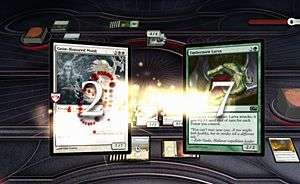 Graphically, Magic 2013 looks much better than its predecessor. There isn’t much that can go wrong with a turn based card game but that doesn’t mean it can’t look good. The colours are bolder, the cards look more detailed (possibly the most important part) and the background areas that the campaign takes you through all look beautiful. It’s not Crysis but then it doesn’t have to be. The sound, equally, is neither remarkable or awful. I’ll be honest in that there isn’t much sound in these games, and what you do hear is pretty basic. I tend to have my own music on, regardless.
Graphically, Magic 2013 looks much better than its predecessor. There isn’t much that can go wrong with a turn based card game but that doesn’t mean it can’t look good. The colours are bolder, the cards look more detailed (possibly the most important part) and the background areas that the campaign takes you through all look beautiful. It’s not Crysis but then it doesn’t have to be. The sound, equally, is neither remarkable or awful. I’ll be honest in that there isn’t much sound in these games, and what you do hear is pretty basic. I tend to have my own music on, regardless.
Finally, the much requested, and in some respects, much needed, deck customisation is not present. You can tinker with your decks based on the cards you are given, but you cannot mix and match decks. I’m no Magic expert, far from it, in fact, but everyone I speak to wants this feature. I understand the complexities must be huge and policing such interaction to ensure a fair game must be a challenge, but surely there is a way around this? The lack of deck customisation is certainly a sore point, but one that doesn’t detract from the overall product.
Pros- The Magic: The Gathering Duels of the Planeswalkers experience at its finest in virtual format
- Ten new decks, each with their own identity and feel, which will take ages to fully unlock
- Planechase mode is bloody awesome
- No Archenemy mode
- Statistics page is lacking
- Manual mana tapping feels redundant
There wasn't much that could wrong with a sequel to Magic 2012, provided Stainless Games just improved the few areas that needed some gloss, rather than a total overhaul. The new decks were always going to be a welcome change of pace after a year with the last set, and thankfully they are pleasant blend of familiarity and a new challenge to ensure that they encourage new players and reward eager veterans. Although there are 'cons', this game is an improvement over last year's edition and should be picked up by fans and new players alike. I can't recommend Planechase mode enough - it's worth the asking price alone. I've never played a game type that could change so rapidly without warning. Some will complain that it's impossible to master but surely that's the point? Regardless, Magic: The Gathering – Duels of the Planeswalkers 2013 should be purchased if you've ever had a past interest in the series, or if you're thinking of starting for the first time.
Last five articles by Chris
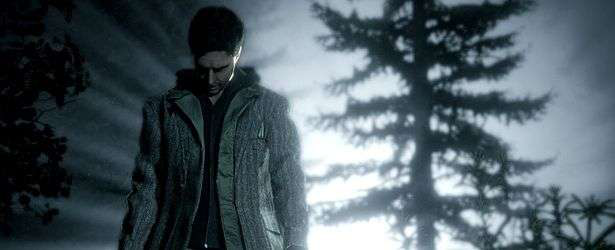

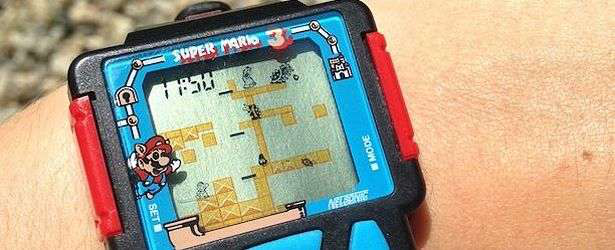














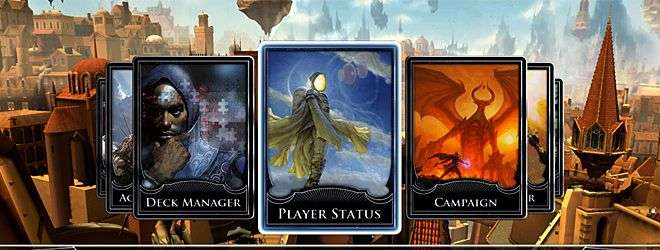
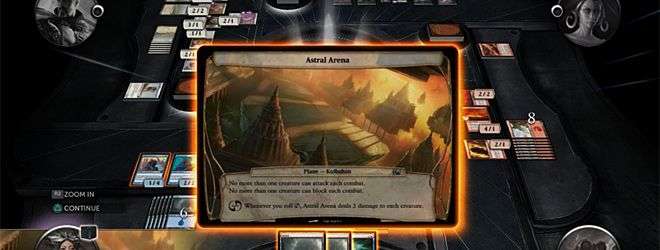
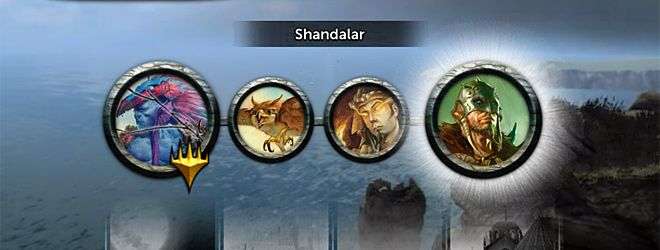
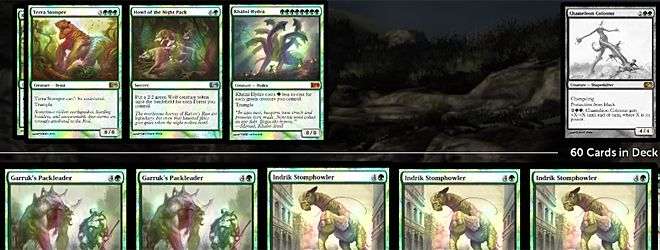






Nice writeup, despite not having a physcial deck for about 8 years due to lack of people to enjoy it with, I’ve been a regular subscriber to MTG releases on the Xbox. Every iteration gets better, slicker and throws in some new stuff for digital players to wrap their heads around.
I really enjoyed Planechaser mode, moreso than the Archenemy actually, and I love the two-headed giant modes for some co-op fun times with mates. Every time there is a new release its a ‘must buy’ for me – particularly now they’ve curtailed the online achievements to a minimum.
Cheers Stu. The more I played Planechaser the more I enjoyed it. Its an excellent game type and really is a strategic game, despite it’s random nature.